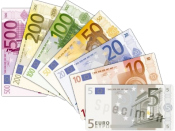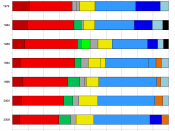History of the European Union
Abstract
The history of the European Union has grown out of the ashes of World War II. In an effort that seeks to unify the smaller countries in the region into a much larger, united Europe, is now seeing many of their goals accomplished. Over the last fifty years, the formulation of regulatory bodies overseen by representatives from each member state and its new euro-currency, the European Union is quickly becoming an economic powerhouse. I believe the growing European Union will have a much larger impact on international trade and will represent a formidable competitor to the United States in future years.
Table of Contents
çIntroduction
çThe EU's Mission
çInstitutions of the EU
çThe Euro
çThe EU: A Superpower in the Making
To gain some historical perspective, one should note that Winston Churchill fostered the idea of the European Union. On September 19, 1946, he called for a "kind of United States of Europe" in a speech he gave at the Zurich University.
Shortly thereafter, the movement came into creation, as The European Federalists Union is was set into place in Paris, France.
In 1951, the European Union (EU) was established by result of a process of cooperation and integration between six countries (Belgium, Germany, France, Italy, Luxembourg, and the Netherlands). After nearly fifty years, with four waves of accessions (1973: Denmark, Ireland and the United Kingdom; 1981: Greece; 1986: Spain and Portugal; 1995: Austria, Finland and Sweden), the EU today has fifteen Member States and is preparing for its fifth enlargement, this time towards Eastern and Southern Europe. (John D. Daniels & Lee H. Radenbaugh, 2001.)
The EU's Mission
The European Union's mission is to organize relations between the Member States and between their peoples in a coherent manner and on the basis...



STREAMLINED.....
Brief, to-the-point, informative, well-researched.
Definitely quality material to say the least.
Bottom line:STREAMLINED.
3 out of 6 people found this comment useful.